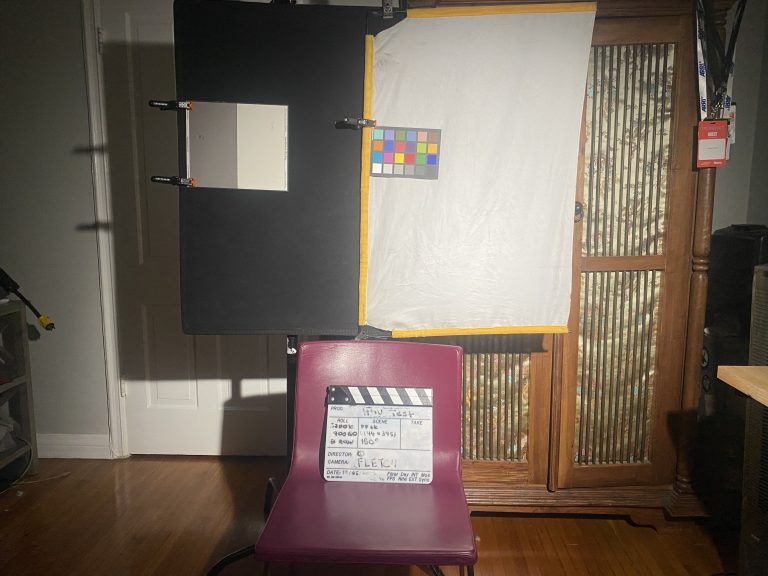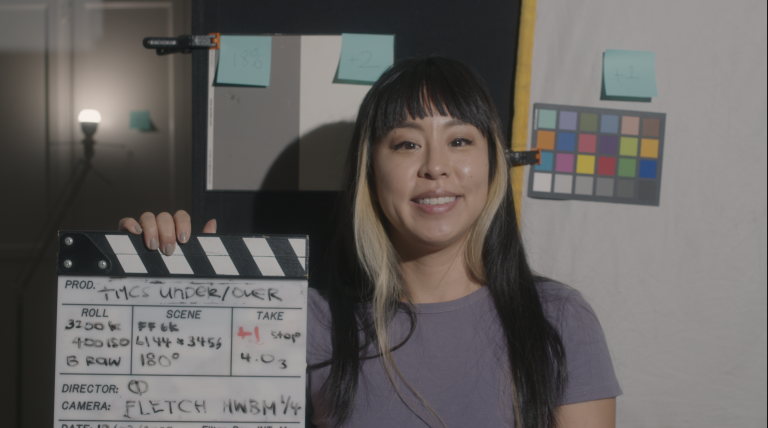The Most Valuable Camera Test
EVERY CINEMATOGRAPHER MUST FIGURE OUT THIER CAMERA EXPOSURE LIMITS
The most valuable test to owning your sensor is to establish your camera’s exposure limits. This test is not necessarily related to lighting but creates a fuller understanding of your sensor and how it influences the final look.In the digital era, it is important to test over/under exposure because digital sensors are usually designed for daylight 5600K or occasionally 4200K.

The Prep
- Make sure camera / lens is ready for use
- Shoot in the file format you intend to use during production. DNXHD, RAW
- Set camera color temp to 3200K (don’t adjust saturation/tint).
- Get two show cards in Black and hite, and place them side by side. (I used a black floppy and white floppy.)
- Recruit a model with a similar skin tone of the on-camera talent for the final project. They should dress in neutral shades (no solid blacks/whites or heavily saturated colors.)
- Use the designated lens for project, and place model in front of center seam show cards facing lens
- Secure an 18% gray (or full grayscale) card and color chart to an unobtrusive spot on the B&W showcards.
- Slate should include:
- Project Name
- Date
- Camera make and serial #
- ISO
- Frame Rate
- Shutter Angle
- T-stop
- Lens Make
- Focal length and serial #
- Kelvin Temp of Camera
- Kelvin Temp of Light
- Place light 20 degrees camera right.- The light should evenly spread.

The Test
- Light 18% gray card using a light meter to the light level you intend to shoot.
- Compose the shot so that the 18% card is fully in frame. Film for 15 seconds.
- Recompose shot to fit model in. Film for 15 seconds.
- Follow the exposure chart, and expose in +⅓,, ½, and/or 1 stop increments.
Take aways
I created luts with different stops for different situations -½, +2, +3, and +4 stops. Filming multiple stops over means the raw image on camera looks overexposed. But when you apply the lut, the footage looks “normal” exposed. The raw overexposed image contains more latitude and more information and will help the colorist greatly.
Test every camera before each project. This is something production should pay for, but if they don’t, that may be a business expense you have to take on. Filming at a normal exposure is a given, but filming with plus or minus stops pushes your creativity and your camera system’s ability to perform. Adding this to your arsenal will only make you a better image maker and cinematographer.
Source American Cinematographer Manual Eleventh Edition